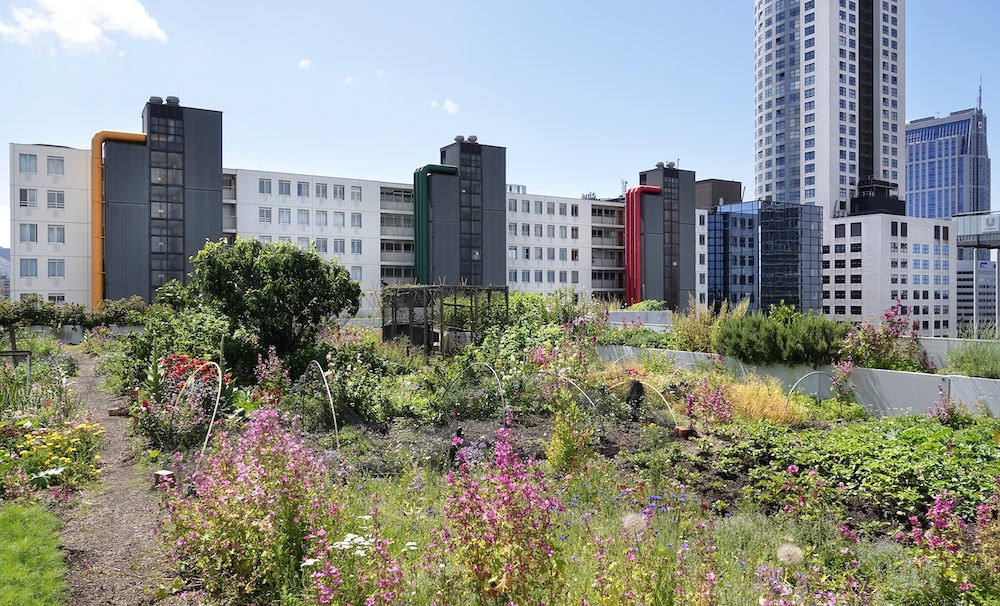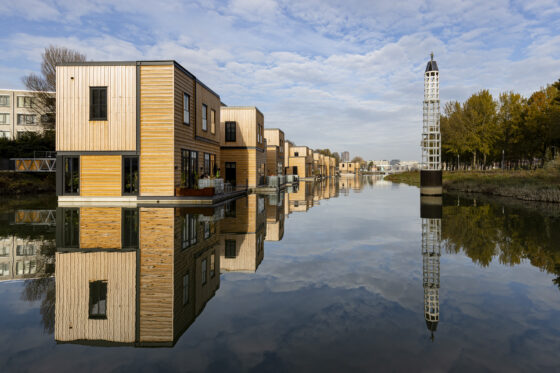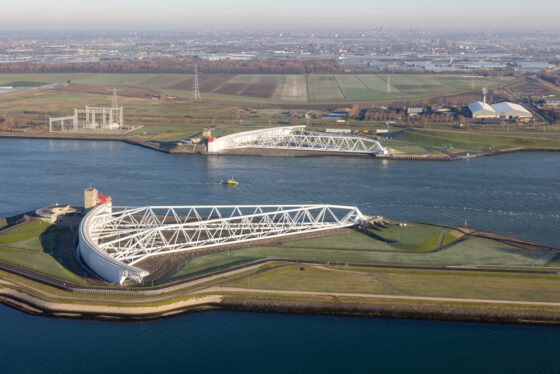Rotterdam is mostly below sea level, but city feet stay dry
Zuza Nazaruk
Parts of the Netherlands have been on high flood alert over the past few days as heavy rain and severe weather increase water levels in the country’s canals and rivers. Rotterdam, as one of the biggest ports in the world, is almost all below sea level. How is the city dealing with the risk?
“Water management is a necessity in Rotterdam,” says the city’s mayor Ahmed Aboutaleb, who was recently in Dubai for the UN climate conference, COP28. “Some 85% of the city lies up to seven meters below sea level. So, Rotterdam has long worked on climate adaptation, especially with regards to flood resilience.”
Most Rotterdam areas that lie below sea level are protected by dykes. In 1953, the Netherlands dealt with the most severe flood in its modern history, which claimed over 1800 lives. A year later, the government established the Deltaworks flood prevention programme which was not completed until 1997.
Rotterdam’s province, Zuid-Holland, was designated as a “key dyke area” due to its economic importance and inability to evacuate the large population. The city is protected from rising seas and storm surges by the Maeslantkering, a moveable barrier that can “close off” the Meuse river from the sea so that water doesn’t enter the city centre.
A system of canals and pumps keeps a stable water level within the city itself. When it rains hard, as it often does in the Netherlands, the city has a number of solutions to absorb the rainwater so that it does not overwhelm the sewage system.

The Benthemplein water plaza, for example – a city square that doubles up as a water storage facility – can hold up to 1.7 million litres. In case of particularly heavy or long-lasting rainfall, when the canals and sewers in the city centre can no longer hold the rainwater, the parking lot in the Museumpark acts as an underground water storage with 10 million litres capacity. The authorities pump the water back into the sewer as soon as it stops raining. The massive rooftop garden Dakakker absorbs rainwater as well as growing fruit and veg.
The city is also experimenting with new ways of storing water, such as planting vegetation that absorbs water in the “sponge garden” Sponstuin, and offers locals subsidies for water storage and planting native vegetation. Rotterdammers can also keep their eyes on the water situation via various government- and city-designed websites, checking how flood-prone their postcode is via “Am I Flooding?”.
Yet, “Rotterdam is not only working on the topic of too much water,” says Aboutaleb. “In recent years, a lack of water is becoming as important. For example, with the “urban waterbuffers” storage scheme we collect rainwater in wet periods and reuse it in times of drought.”

The city’s climate adaptation programme, Rotterdams WeerWoord, is based on six challenges of climate adaptation – precipitation, drought, heat, flooding, soil subsidence, and groundwater. The city makes much of its innovative architectural solutions to deal with the water and reclaims much-valued urban space. Floating buildings – villas, offices, even a farm – have been sprouting up around the city.
Knowledge-sharing
Rotterdam has also been building links with other cities in vulnerable geographical areas around the world going back decades. In 2011, for example, city officials helped support a project in Ho Chi Minh City, Vietnam. It is also a key member of the C40 network in which mayors from 96 cities share best practices for cutting emissions and protecting communities against the adverse effects of climate change.
In November 2023, the network established a Water Safe Cities Accelerator in which 16 cities, including Rotterdam, Buenos Aires, and New York City, pledged to protect their most vulnerable communities from flooding and drought by 2027 via comprehensive early warning systems and robust emergency response plans.
Within C40, Rotterdam leads the Connecting Delta Cities network, which focuses specifically on solutions for geographically exposed cities. Mayors discuss water management issues such as sea-level rise or coastal flooding and exchange best practices to implement solutions.
Rotterdam, Aboutaleb said, “wants to do its part in meeting climate goals, renewing the local economy and increasing the energy security of Europe. We are working together to develop value chains based on green electricity, hydrogen, and circular carbon to replace the current use and throughput of fossil fuels.”
Water diplomacy
Rotterdam’s activity is a significant part of Dutch “water diplomacy” – an effort to position a country internationally as a water expert and as such, play a role in preventing and mitigating conflicts over water resources.

Back in 2011, the Clingendael institute for foreign policy suggested water diplomacy could become a Dutch niche activity and since 2015, the Netherlands has had a water ambassador. In 2018, the Netherlands and 22 other countries established the Global Commission on Adaptation, which aims to accelerate climate adaptation efforts worldwide. Its successor, the Global Center on Adaptation, is based in a floating office moored in the city’s Rijnhaven.
Every solution to climate change that Rotterdam showcases has a double function of protecting and promoting the city. The Keringhuis, a visitor centre by the storm surge Maeslantkering, receives so many foreign delegations that an exhibition section is dedicated to displaying the gifts they bring.
According to the Keringhuis spokesman Jeroen Kramer, every time a water-related natural disaster strikes somewhere in the world, the visitor centre receives a foreign delegation from that country soon afterwards.
“We need to adapt and invest to ‘survive’,” says Aboutaleb. “And this is why we value exchanging ideas and knowledge with other cities.”
Thank you for donating to DutchNews.nl.
We could not provide the Dutch News service, and keep it free of charge, without the generous support of our readers. Your donations allow us to report on issues you tell us matter, and provide you with a summary of the most important Dutch news each day.
Make a donation